Swayambhunath Stupa (Monkey Temple)
Swayambhunath Stupa, often referred to as the Monkey Temple due to its large simian population, is one of the most ancient and revered holy shrines in Kathmandu, Nepal. Perched atop a hill, this iconic Buddhist stupa offers a panoramic view of the sprawling Kathmandu Valley below.
 1.jpg)
-
History and Significance: The origins of Swayambhunath are shrouded in myth and history, with references dating back to the 5th century. According to legend, the entire valley was once filled with an enormous lake, out of which grew a lotus. The valley came to be known as Swayambhu, meaning "Self-Created." The stupa is believed to have been established more than 1,500 years ago. Over the centuries, it has been a vital center of Buddhist faith and learning.
-
Architectural Details: The Swayambhunath complex consists of a white dome at its base, representing the earth, and a cubical structure painted with eyes of Buddha looking in all four directions, symbolizing the omnipresence of Buddha. The thirteen tiers above the cube represent the stages that a human being must pass through to achieve nirvana. Prayer flags adorn the stupa, carrying mantras and prayers into the wind.
-
Cultural and Religious Practices: Swayambhunath is a venerated site not only for Buddhists but also for Hindus, showcasing the intertwined religious harmony prevalent in Nepal. The site is bustling with pilgrims and visitors at sunrise and sunset, who come to perform rituals, meditate, or simply enjoy the serene atmosphere. The sound of spinning prayer wheels and chanting fills the air, adding to the spiritual ambiance.
-
The Monkeys: The temple’s nickname, "Monkey Temple," comes from the hundreds of monkeys that inhabit the temple complex. These monkeys are considered holy to the devotees of the temple, believed to be the protectors of the temple and the embodiment of Hanuman, the monkey deity associated with Lord Ram in Hindu mythology.
-
Visitor Experience: Visitors can climb the 365-step staircase that leads to the main platform or drive up a back road for easier access. The site offers a beautiful blend of spirituality, picturesque scenery, and architectural beauty, making it a must-visit for anyone traveling to Kathmandu. Additionally, the temple provides insight into the religious tolerance and cultural synthesis that is characteristic of Nepali society.
Swayambhunath Stupa remains a profound emblem of spiritual tranquility and a beacon of peace, attracting tourists and devotees alike to witness its ancient beauty and ceremonial significance.
Pashupatinath Temple
Pashupatinath Temple is one of the most sacred Hindu temples in Nepal and a significant landmark in Kathmandu. Dedicated to Lord Shiva, the temple complex is situated on the banks of the holy Bagmati River and serves as a site of spiritual activity and pilgrimage, drawing thousands of devotees from Nepal and India.

-
History and Significance: The origins of Pashupatinath are mythical and steeped in centuries of tradition. While the current structure dates back to the 17th century, the site itself has been recognized as a sacred place since early medieval times. It is believed that the temple was constructed in its original form in the 3rd century B.C. by Pashupreksha of the Somadeva Dynasty. The temple complex was later expanded and refurbished by different dynasties over the centuries, each adding layers of architecture and history.
-
Architectural Details: Pashupatinath exemplifies traditional Nepalese temple architecture with its pagoda-style design, which features a tiered roof constructed from copper and gold. The temple's ornate wood carvings of various deities and mythological creatures are a showcase of the exquisite craftsmanship of the Newar artisans of the Kathmandu Valley. The main temple is a square, two-tiered structure with a golden spire, accessible only to Hindus. However, the sprawling complex includes many other shrines, ashrams, images, and inscriptions which are accessible to non-Hindu visitors.
-
Cultural and Religious Practices: Pashupatinath is best known for its association with the Hindu practices surrounding death. It is one of the few places in the world where open-air cremations are observed publicly along the banks of a river. Hindus from all over Nepal and India bring their deceased loved ones here for cremation, following a ritual that is believed to help the departed soul attain liberation.
-
Festivals and Ceremonies: One of the biggest events at Pashupatinath is Maha Shivaratri, the great night of Lord Shiva, which attracts hundreds of thousands of devotees. During this festival, the temple complex becomes a hub of activity with ascetics, pilgrims, and sadhus (holy men), many of whom are seen smeared in ash and chanting hymns.
-
Visitor Experience: While the inner sanctum of the temple is off-limits to non-Hindus, visitors can explore the outer courtyards and the surrounding temples. The eastern bank of the Bagmati River provides a panoramic view of the temple complex and the ongoing religious activities. It’s an opportunity for visitors to witness the unique blend of life and death rituals, making Pashupatinath a profound cultural and spiritual experience.
Visiting Pashupatinath offers insight into the religious practices of Hinduism and the cultural fabric of Nepal. It remains a place of deep spiritual significance, attracting scholars, devotees, and tourists who seek to understand its sacred legacy and witness its timeless rituals.
Boudhanath Stupa
Boudhanath Stupa is one of the largest and most significant Buddhist stupas in the world, located in Kathmandu, Nepal. It stands as a prominent symbol of peace and a focal point for Tibetan Buddhism in the region, attracting thousands of pilgrims and visitors each year.
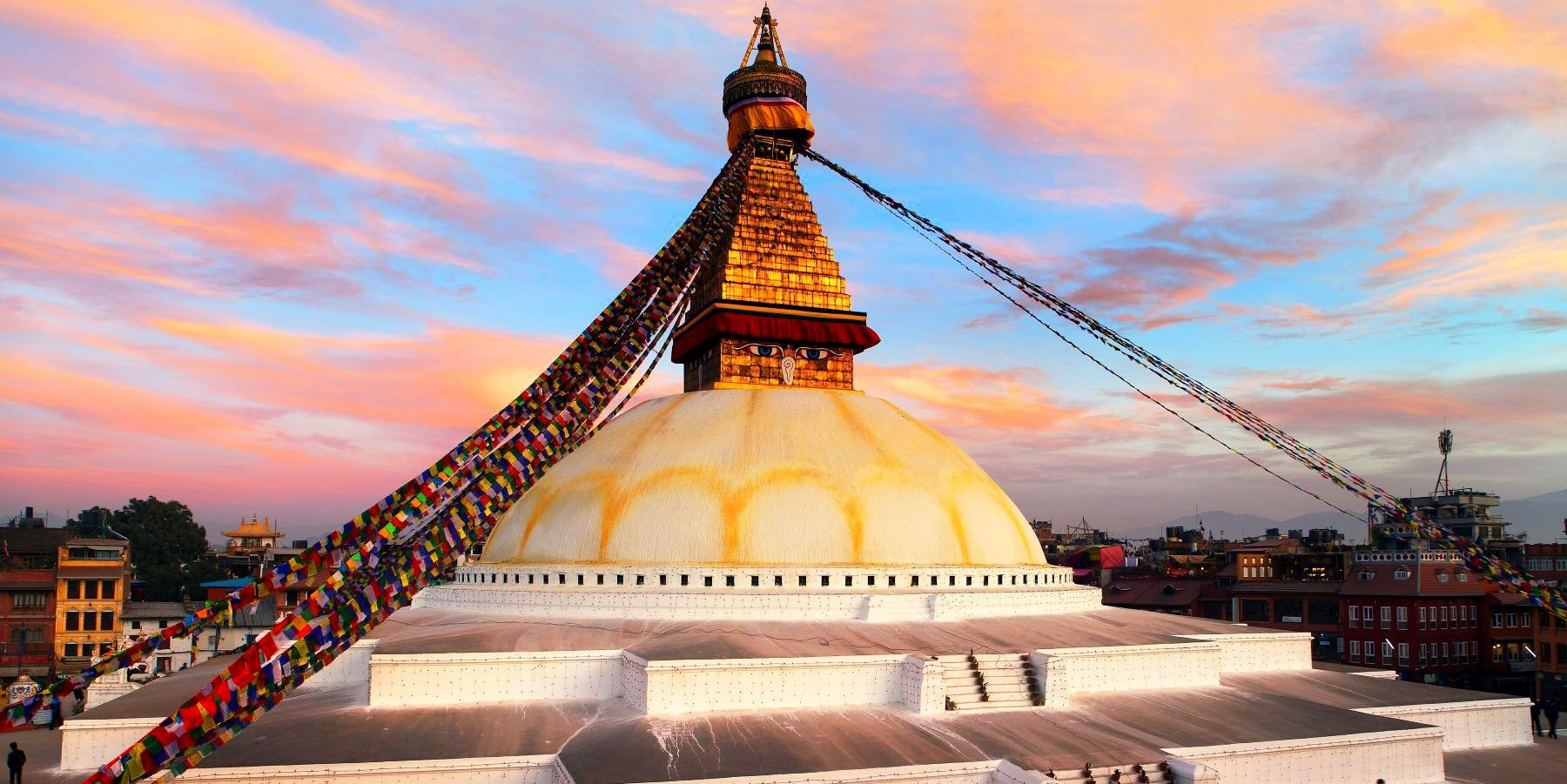
-
History and Significance: The history of Boudhanath dates back to the 5th century when it was established by Licchavi rulers, as per historical inscriptions. Over the centuries, it has undergone several restorations due to natural disasters and wear from time. The stupa was heavily damaged during the 2015 earthquake in Nepal and has since been beautifully restored. Boudhanath serves as both a place of meditation and a visual journal of Tibetan Buddhism. It is said to entomb the remains of Kassapa Buddha, making it a vitally important site for practitioners and followers.
-
Architectural Details: The stupa's massive mandala makes it one of the largest spherical stupas in Nepal and indeed the world. The structure is topped with a square tower bearing the omnipresent eyes of Buddha, which look out across the four cardinal directions, symbolizing the omniscience of a Buddha. The pyramid-shaped tower is topped with a pinnacle representing the thirteen stages to enlightenment. The base of the stupa consists of three large platforms, decreasing in size, which symbolize the earth, and it is here that devotees walk around the stupa in a clockwise direction while praying.
-
Cultural Practices: Boudhanath is a beacon for Tibetan exiles in Nepal and has grown to become a key center for Tibetan culture in Kathmandu. The area around the stupa is lined with monasteries and Tibetan artifacts shops, and is often filled with Tibetan monks in maroon robes and laypersons spinning prayer wheels, reciting mantras, and making ritual circumambulations of the stupa — a practice known as 'kora'.
-
Festivals and Events: The stupa is spectacularly lit up during important Buddhist festivals like Losar (Tibetan New Year) and Buddha Jayanti (Buddha's birthday). During these events, Boudhanath buzzes with energy as elaborate rituals are performed, traditional music fills the air, and colorful prayers flags flutter in the wind.
-
Visitor Experience: Visitors to Boudhanath can absorb the peaceful atmosphere and observe daily religious activities that provide a deep insight into Buddhist philosophy and practices. The stupa's surroundings are also a hub for meditation, teachings, and study related to Tibetan Buddhism, offering a serene and spiritual experience unlike any other.
Boudhanath Stupa not only stands as a monument of significant historical and religious importance but also as a place of harmony and peace in the bustling cityscape of Kathmandu, making it a must-visit destination for anyone interested in spiritual growth, architectural beauty, and cultural immersion.
Kathmandu Durbar Square
Kathmandu Durbar Square, also known as Basantapur Durbar Square, is a UNESCO World Heritage Site located in the heart of the capital city of Nepal. It serves as a spectacular showcase of architecture, history, and religion, reflecting centuries of cultural and royal heritage.
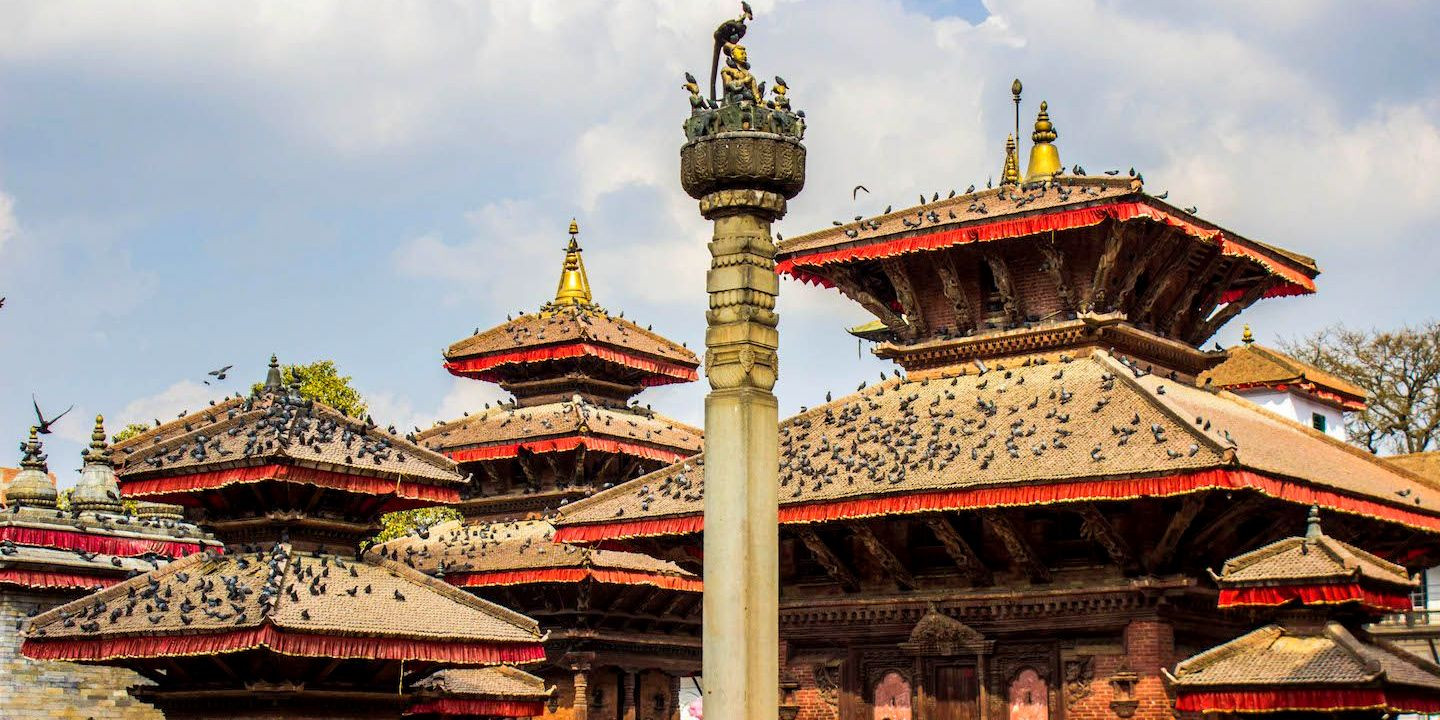
History and Significance: Kathmandu Durbar Square was the site of the royal Nepalese residence until the 19th century and the place where the city's kings were once crowned and legitimized. The square's history dates back to the Licchavi period (3rd to 9th centuries) but gained prominence in the Malla period (12th to 18th centuries) when most of its current structures were built.
Architectural Details
The architecture in Kathmandu Durbar Square is a mix of wood and stone art characterized by intricate carvings and a broad range of styles. The square houses the old royal palace complex, which encompasses an array of courtyards, temples, and statues. Key attractions include:
-
Kumari Ghar, the home of the living goddess Kumari.
-
Taleju Temple, built by King Mahendra Malla in 1549 AD.
-
Kal Bhairav, a statue representing the god of destruction.
-
The Great Bell and Drum, used during ceremonies and announcements.
-
Each structure within the square is an excellent example of ancient Newar architecture with multi-tiered roofs, carved windows, and exquisitely detailed woodwork.
Cultural Practices: Kathmandu Durbar Square is not just a tourist site but also a living part of the city's cultural and religious life. Regular religious and cultural festivities take place here, including the Indra Jatra and Dashain festivals, where traditional dances, processions, and rituals are performed, drawing a mix of locals and tourists.
Festivals and Events: One of the most enchanting times to visit Kathmandu Durbar Square is during the Indra Jatra festival. This annual event is marked by processions, masked dances, and displays of sacred images. The square becomes a hub of activity with throngs of worshippers and spectators.
Visitor Experience: Visitors to Kathmandu Durbar Square can explore the museum housed in the old palace, which exhibits royal regalia and artifacts relating to the Shah Dynasty and earlier Malla kings. The surrounding streets are lined with shops selling crafts, traditional garments, and local foods, enhancing the cultural experience.
Preservation Concerns: The square suffered significant damage during the 2015 earthquake, but restoration efforts have been ongoing to preserve its historical integrity. These efforts are crucial for maintaining the site’s UNESCO status and ensuring that future generations can also enjoy and learn from these magnificent structures.
Kathmandu Durbar Square remains a profound testament to Nepal’s rich historical tapestry and serves as a focal point for both cultural festivities and daily life in Kathmandu. It provides visitors with a vivid insight into the grandeur of Nepal’s past and the endurance of its cultural traditions.
Thamel Area
Thamel is Kathmandu's vibrant tourist hub, known for its bustling streets, colorful shops, and lively atmosphere. It's a popular starting point for many travelers as they dive into the heart of Nepalese culture and adventure.
-
Overview and Significance: Thamel has been the center of the tourist industry in Kathmandu for over four decades, since the hippie trail days of the 1960s and 70s. It is renowned for its narrow alleys crowded with various shops selling everything from prayer flags to hiking boots, traditional Nepalese art to modern music. This area is a melting pot of cultures, showcasing a blend of eastern and western influences.
-
Cultural and Commercial Hub: Thamel is not just a place to stay and shop; it's a cultural mosaic. The area is filled with guesthouses, restaurants, pubs, bookshops, and boutiques that cater to every need and budget. It is often considered a haven for backpackers and is the go-to place for organizing and equipping for treks to remote regions of Nepal. Furthermore, Thamel is a nightlife hotspot, with numerous bars and clubs providing lively places to unwind after a day of sightseeing or trek preparation.
-
Architectural and Urban Features: The architectural style in Thamel is a mix of traditional Newari houses with intricately carved wooden windows and balconies, and modern buildings that cater to the needs of the international traveler. The streets are a chaotic yet charming blend of old and new, where motorbikes and rickshaws zip through narrow lanes filled with pedestrians.
-
Economic Impact: Thamel plays a crucial role in Nepal’s tourism sector, which is a significant part of the country's economy. It is the epicenter for travel and adventure enterprises, offering services such as trekking guides, travel bookings, and equipment rentals. The influx of tourists has helped spur the local economy but also poses challenges related to sustainability and cultural preservation.
-
Cultural Experiences: Visitors to Thamel will find an array of cultural experiences from live music performances showcasing traditional Nepali music to international genres. The area is also a foodie's paradise, offering an eclectic mix of Nepali, Tibetan, and international cuisine.
-
Challenges and Preservation: While Thamel is vital for tourism, it faces challenges such as commercialization impacting traditional culture, overcrowding, and the strain on local infrastructure. Efforts to preserve the cultural authenticity of Thamel while accommodating the needs of tourists are ongoing.
Thamel remains an essential stop for anyone visiting Kathmandu, offering a dynamic introduction to Nepal’s urban culture, a place to meet fellow travelers, and a jumping-off point for further adventures in the beautiful landscapes of Nepal.
Garden of Dreams
The Garden of Dreams, also known as the Garden of Six Seasons, is a serene oasis in the bustling heart of Kathmandu, Nepal. This neoclassical garden is a splendid example of architectural and landscape sophistication and offers a tranquil escape from the urban chaos of the city.
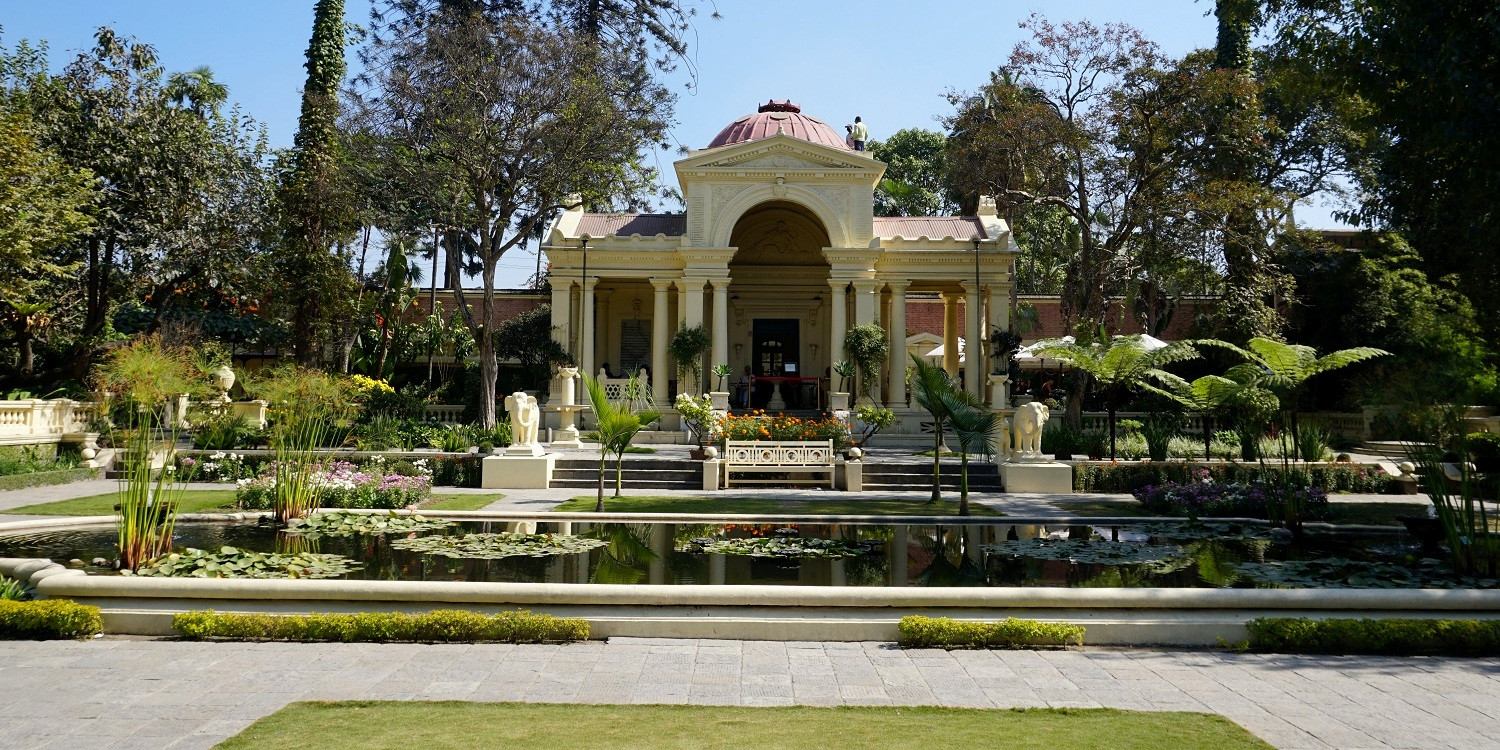
-
History and Restoration: Originally created in the early 1920s by Field Marshal Kaiser Sumsher Rana, the Garden of Dreams was part of a larger estate that included several pavilions and amenities designed for royal use. The garden fell into disrepair after the death of its creator but was revitalized in the early 2000s with the help of the Austrian government. This restoration project brought back its former glory and introduced modern amenities while preserving its historical essence.
-
Design and Features: The garden spans roughly 6,895 square meters and is designed in the Edwardian style, featuring formal gardens, pergolas, fountains, decorative garden furniture, and pavilions. One of the most striking features is the Kaiser Cafe, housed in one of the original pavilions, which offers a pleasant dining experience amidst the greenery. The layout of the garden is symmetric, with a central pavilion and radial paths that lead to various thematic areas and other pavilions, each offering a unique ambiance.
-
Cultural Significance: The Garden of Dreams is not only a place of historical importance but also serves as a cultural venue. It hosts various events including music performances, literary readings, and art exhibitions, making it a cultural hub in Kathmandu. It is also a popular spot for both locals and tourists looking for a peaceful place to relax and enjoy the beauty of nature.
-
Visitor Experience: Visitors to the Garden of Dreams can enjoy a leisurely stroll through its well-manicured lawns, admire the intricate details of the pavilions, or simply sit and relax by the ponds and fountains. The garden's lush landscapes are perfect for photography, and its quiet corners offer a respite for those seeking peace and solitude.
-
Conservation and Tourism: The Garden of Dreams is an excellent example of successful conservation in Nepal, balancing historical preservation with modern needs. As a popular tourist destination, it plays a significant role in Kathmandu’s tourism sector, providing an educational glimpse into the architectural and garden design heritage of early 20th-century Nepal.
The Garden of Dreams remains a testament to the vision of its founders and the dedication of those who restored it. It continues to enchant visitors with its timeless beauty and remains a cherished green space in Kathmandu.
Bhaktapur Durbar Square
Bhaktapur Durbar Square, located in the ancient city of Bhaktapur, just a short drive from Kathmandu, Nepal, is one of the three durbar squares in the Kathmandu Valley, all of which are UNESCO World Heritage Sites. Unlike its counterparts in Kathmandu and Patan, Bhaktapur Durbar Square has managed to retain its traditional aura, largely due to its more isolated location and the concerted efforts in conservation and restoration it has undergone.
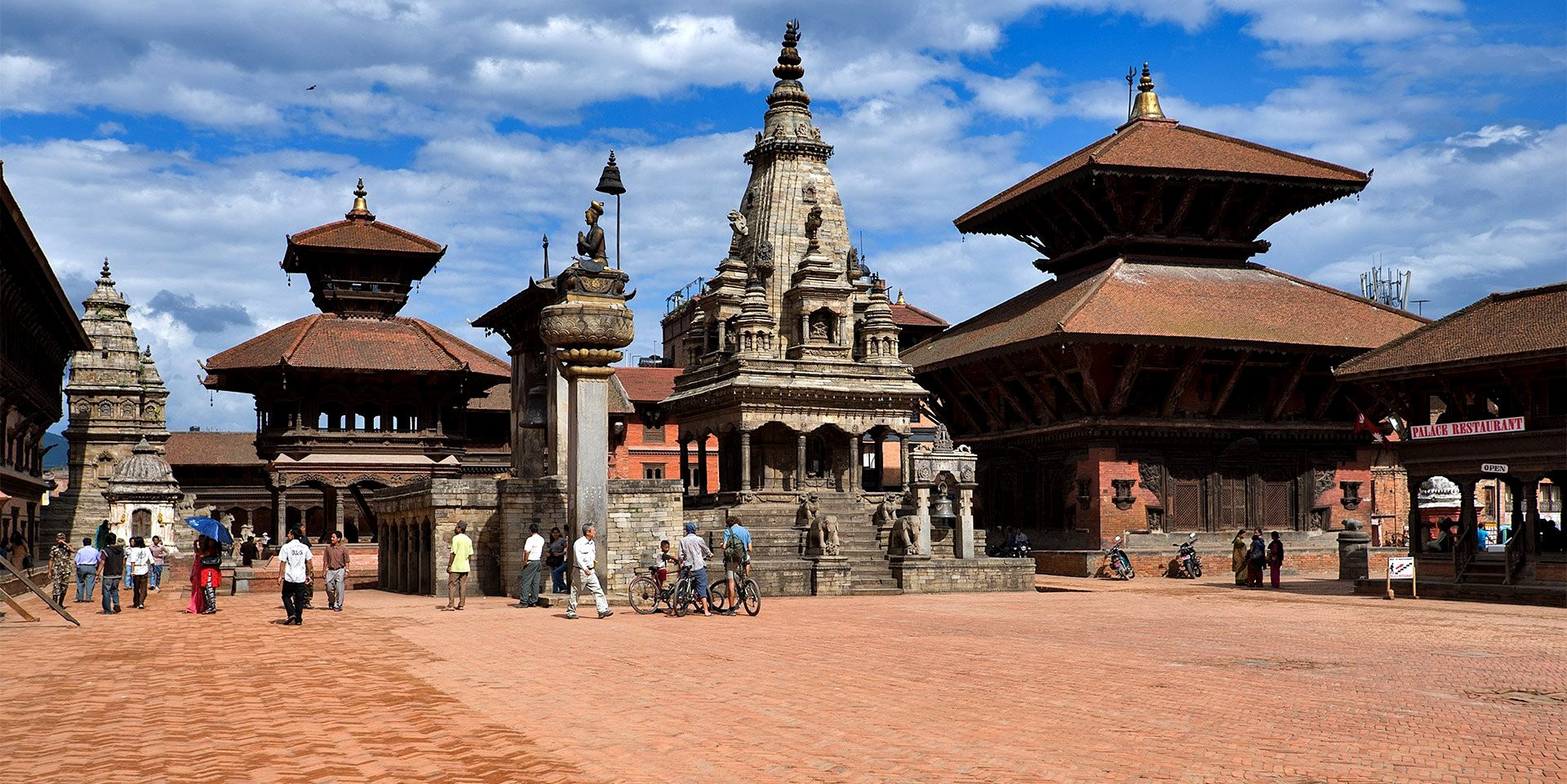
Historical Background: The square's history dates back to the 12th century, during the reign of King Ananda Malla and continued to be a royal precinct for the Malla kings of Bhaktapur. Each subsequent ruler added their touch to the square, enhancing its architectural diversity and cultural significance until the 18th century.
Architectural Splendor
Bhaktapur Durbar Square is renowned for its exquisite art, colorful festivals, vibrant cultural life, and its impressive display of medieval craftsmanship. The architecture around the square is noted for its intricate carvings and beautiful pagoda roofs. Key structures within the square include:
-
55 Window Palace: A masterpiece of wood carving.
-
Golden Gate (Sun Dhoka): The entrance to the main courtyard of the palace, this gate is an example of repoussé art.
-
Lion's Gate: Featuring two huge statues of lions alongside figures of gods.
-
Vatsala Temple: Known for its sandstone architecture and the famous bell of barking dogs.
-
Nyatapola Temple: This five-story pagoda was built by King Bhupatindra Malla and is one of the tallest pagodas in Nepal.
-
Bhairava Nath Temple: Dedicated to Bhairava, the god of terror.
Cultural Significance: The square is not just a tourist site but remains a focal point for religious and cultural activities. It hosts various festivals, most notably the Bisket Jatra, an annual celebration that marks the Nepalese New Year. This event is famous for its chariot processions, tug-of-wars, and cultural dances, which draw both locals and tourists in large numbers.
Preservation Efforts: Bhaktapur Durbar Square suffered significant damage during the 2015 earthquake, but restoration efforts have been robust, involving local artisans who employ traditional methods and materials to maintain the authenticity of the structures. These efforts underscore the community’s commitment to preserving their cultural heritage.
Visitor Experience: Tourists visiting Bhaktapur Durbar Square are greeted with a living history museum, showcasing ancient Nepali culture and architecture. The square's relatively quieter and less commercialized environment compared to Kathmandu or Patan Durbar Squares offers a more relaxed and authentic experience. Entry fees are used to fund the preservation projects, contributing to the square’s upkeep and restoration.
Impact on Local Community; The square is a vital part of the local economy, with many residents involved in tourism-related businesses. Artisans, guides, and shop owners all derive their livelihood from the tourism that the square attracts, making it not just a cultural and historical asset but also an economic one.
Bhaktapur Durbar Square remains a testament to Nepal's rich historical narrative and architectural grandeur, offering a profound insight into the country’s medieval past and its ongoing story of cultural resilience and restoration.
Narayanhiti Durbar
Narayanhiti Durbar, now known as the Narayanhiti Palace Museum, is a historic palace located in the heart of Kathmandu, Nepal. It was once the primary residence of the country's monarchs and has played a significant role in Nepal's modern history. Since the abolition of the monarchy in 2008, the palace has been converted into a museum that is open to the public.
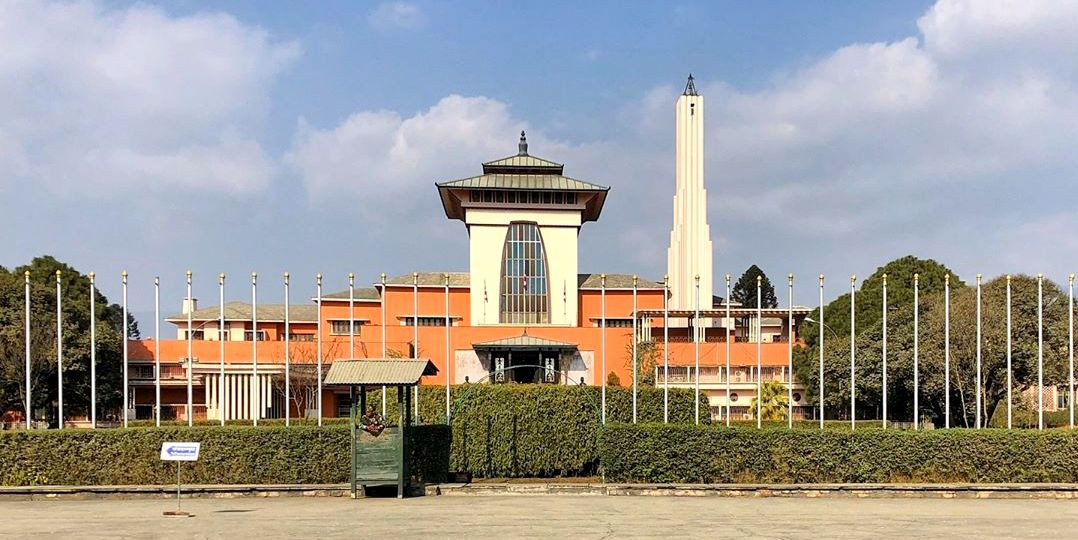
-
Historical Background: The original Narayanhiti Palace was built in the late 18th century, but the structure that stands today dates back to the 1960s, when it was rebuilt in a contemporary style under the direction of King Mahendra. The palace's name, 'Narayanhiti', is derived from two words: 'Narayan', a form of the Hindu god Vishnu, and 'Hiti', meaning water spout, which is located in the eastern part of the palace complex.
-
Architectural Features: The palace's architecture is a unique blend of traditional Nepalese craftsmanship and modern 20th-century styles. It features an impressive façade with large, ornate gates that lead into a sprawling complex of courtyards and buildings. The main building is characterized by its distinctive pagoda-style roof, a hallmark of traditional Nepali architecture, juxtaposed with more modern elements. Inside, the palace houses several halls and rooms, each decorated with intricate woodwork, paintings, and artifacts that reflect the opulence in which the royal family lived.
-
Transformation into a Museum: After Nepal transitioned from a monarchy to a federal democratic republic, the palace was converted into a museum. This transformation was symbolic of the country's shift towards greater transparency and public access to spaces that were previously reserved for the elite. The museum now displays items from the royal family, including their personal belongings, gifts received from foreign dignitaries, and a detailed account of the country's royal history.
-
Cultural and Historical Significance: Narayanhiti Palace Museum serves not only as a repository of Nepal's royal history but also as a witness to the dramatic political changes the country has undergone in recent decades. The museum's exhibits include the throne and the crown jewels, along with other regalia that symbolize the power and prestige of the Nepalese monarchy.
-
Visitor Experience: Visitors to the museum can explore various rooms, such as the throne room, banquet halls, and private quarters of the royal family, providing an insight into their lifestyle. The transition of these spaces into a public museum has allowed locals and tourists alike to gain a deeper understanding of Nepal’s political and cultural transformations.
-
Role in Contemporary Nepal: Today, the Narayanhiti Palace Museum is not just a tourist attraction but also a symbol of Nepal's evolving identity from a kingdom to a republic. It stands as a significant educational resource and a monument to the history of governance in Nepal, making it a must-visit for those interested in the complexities of the country's royal and republican narratives.
Visiting the Narayanhiti Palace Museum offers a unique glimpse into the life of the Nepalese monarchy and an understanding of the socio-political changes that have shaped modern Nepal. It remains a pivotal part of Kathmandu's cultural and historical landscape.
The National Museum (Chhauni)
The National Museum of Nepal, also known as the Rashtriya Museum, is located in the Chhauni area near the famous Swayambhunath stupa in Kathmandu. Established in the early 20th century, the museum is divided into three main buildings — the Historical Museum, the Art Gallery, and the Buddhist Art Gallery — making it a significant cultural and educational hub in Nepal.
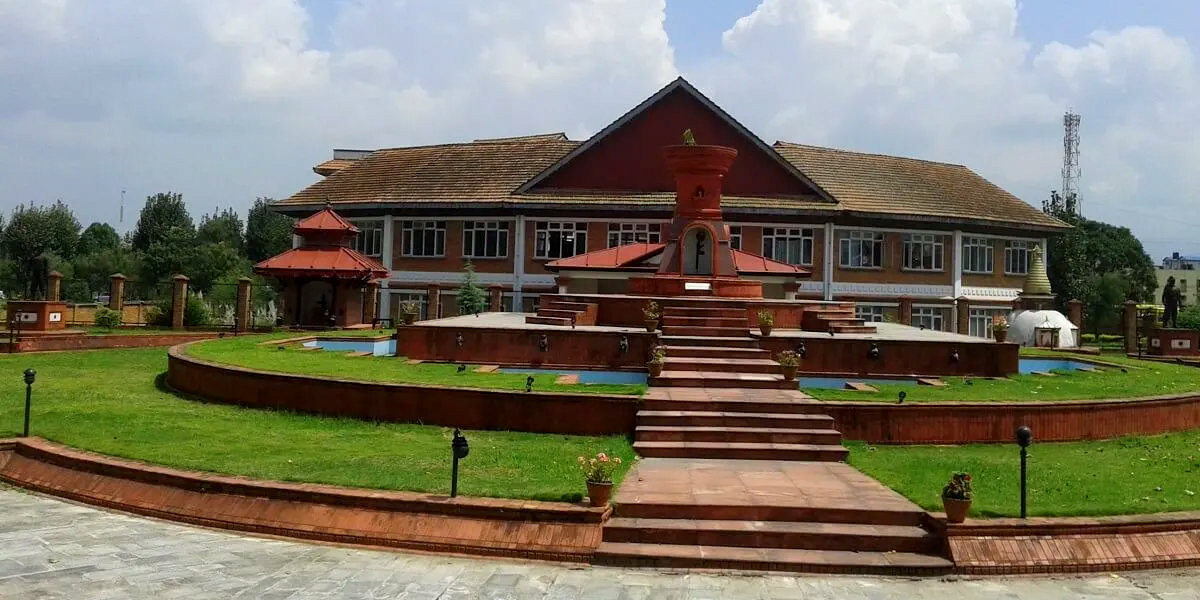
Historical Background: The National Museum initially began as a collection of weapons and armory, reflecting Nepal's martial history and the importance of warfare in the shaping of the region's political landscape. Over the decades, it has expanded to include a vast array of Nepalese art, sculpture, and historical artifacts that span several centuries. This transformation has turned the museum into a repository of national heritage, capturing the essence of Nepali culture and history.
Architectural and Museum Layout
The museum's architecture is influenced by traditional Nepalese design, with buildings constructed in the classic pagoda style. The complex is surrounded by a well-maintained garden that enhances the serenity and aesthetic appeal of the museum. Each building within the complex is dedicated to different aspects of Nepali history and culture:
-
The Historical Museum houses a broad collection of historical artifacts, including ancient scripts, coins, and tools that narrate the story of Nepal from prehistoric times to the modern era.
-
The Art Gallery is home to an exquisite collection of classical paintings, sculptures, and woodwork that highlight the artistic excellence of Nepali craftsmen and artists through the ages.
-
The Buddhist Art Gallery showcases Buddhist thangkas, statues, and manuscripts, emphasizing the significant impact of Buddhism on Nepali culture.
Collections and Exhibitions
The National Museum is renowned for its extensive range of collections that cover various dynasties and historical periods of Nepal. Noteworthy items include:
-
Ancient statues and inscriptions, some of which date back to the Licchavi period.
-
Medieval weapons and armory used in historical battles that shaped the region.
-
Musical instruments, traditional costumes, and jewelry that depict the everyday life and culture of the Nepali people.
Educational Role and Cultural Significance: The museum serves as an important educational resource for students and historians interested in the study of Nepal’s rich heritage. It offers insights into the country’s complex history, diverse cultures, and religious practices. The museum not only preserves artifacts but also engages in conservation efforts and organizes exhibitions and workshops that educate the public about the importance of heritage conservation.
Visitor Experience: Visitors to the National Museum can expect a comprehensive tour through Nepal's history, from ancient civilizations through the medieval kingdoms to modern times. The museum provides guided tours in various languages, enhancing the educational experience for international tourists. The serene environment, coupled with the wealth of knowledge contained within, makes it a must-visit for anyone interested in understanding the historical and cultural fabric of Nepal.
The National Museum in Chhauni remains a pivotal institution in Kathmandu, serving both as a custodian of Nepali heritage and as a center for cultural education and appreciation. It is a treasure trove for anyone looking to delve deeper into the fascinating history of this Himalayan nation.
Tips for Top Attractions in Kathmandu for Day Tours
Exploring the top attractions in Kathmandu through day tours can be a captivating experience. To make the most out of your visits to these historical and cultural sites, here are some practical tips:
-
Start Early: Kathmandu's attractions can get crowded, especially during peak tourist seasons. Starting your day early will help you avoid the biggest crowds and experience the sites in a more peaceful setting.
-
Dress Appropriately: Many of the attractions in Kathmandu are religious sites, so it's important to dress modestly. This means covering shoulders and knees as a sign of respect, especially when entering temples and stupas.
-
Hire a Guide: For a more enriching experience, consider hiring a local guide. Guides can provide detailed historical context and insights that you might miss otherwise. They can also help navigate the sometimes chaotic environments of popular tourist spots.
-
Stay Hydrated and Protected: Kathmandu can be hot and sunny, so carry water with you, and don’t forget sun protection like sunscreen, hats, and sunglasses.
-
Carry Cash: While some popular tourist spots accept credit cards, many smaller shops and entry fees at various sites are cash-only. It's also useful for tipping guides and drivers.
-
Plan Your Route: If you are visiting multiple sites in one day, plan your route efficiently. Kathmandu can have heavy traffic, so consider proximity and traffic patterns when scheduling your day.
-
Respect Local Customs: Always ask permission before taking photographs, especially of people and religious ceremonies. Some areas within temples or museums may prohibit photography.
-
Try Local Food: Kathmandu is also famous for its cuisine. Take the time to try local dishes like momos (dumplings), dal bhat (lentil soup and rice), and other traditional Nepalese foods in the Thamel area or near major tourist sites.
-
Check Opening Times: Some attractions may have different operating hours on various days of the week, especially during local festivals or national holidays. Check ahead to make sure the places you want to visit will be open.
-
Be Prepared for Walking: Many of Kathmandu’s historic sites are located in areas that are best explored on foot. Wear comfortable walking shoes and be prepared for uneven surfaces, especially in areas like Durbar Squares and temple complexes.
By following these tips, you can ensure a more enjoyable and respectful visit to the incredible sights that Kathmandu has to offer, making your day tours both memorable and smooth.
Best Time for Top Attractions in Kathmandu for Day Tours
The best time to visit the top attractions in Kathmandu for day tours largely depends on the weather, as it can significantly influence your experience of the city and its cultural landmarks. Here’s a breakdown of the ideal times to plan your tours:
Autumn (September to November): Autumn is widely regarded as the best time to visit Kathmandu for several reasons:
-
Clear Weather: During these months, the weather is generally dry and clear, which provides excellent visibility — perfect for enjoying panoramic views from places like Swayambhunath Stupa and the surrounding hills.
-
Moderate Temperatures: The temperature is comfortably cool, making it ideal for walking tours around the city, including extensive explorations of Durbar Squares and other outdoor attractions.
-
Festivals: This season coincides with many major Nepalese festivals such as Dashain and Tihar, offering travelers a unique opportunity to experience local culture and traditions in full vibrancy.
Winter (December to February): Winter can also be a good time to visit, although temperatures can be quite cold, especially in the mornings and evenings:
-
Fewer Tourists: There are generally fewer tourists during the winter months, which means less crowded visits to popular sites like Boudhanath Stupa and Pashupatinath Temple.
-
Clear Skies: The skies are still clear, offering good conditions for photography and sightseeing.
-
It's advisable to dress warmly, as the mornings and evenings can see temperatures dipping quite low.
Spring (March to May): Spring is another excellent season for visiting Kathmandu:
-
Pleasant Weather: Temperatures start to warm up, but it's not yet as hot as the summer. The weather is generally pleasant, making it comfortable to explore the city.
-
Blooming Flowers: The valley looks beautiful with blooming flowers, adding a picturesque quality to sites like the Garden of Dreams and other green spaces.
-
Cultural Events: Holi, the festival of colors, and Buddha Jayanti, the celebration of Buddha’s birth, occur in the spring, adding to the cultural allure.
Summer/Monsoon (June to August): Summer, which transitions into the monsoon, is generally considered the least favorable time to visit:
-
Rain and Mud: The heavy rains can make traveling challenging due to muddy conditions and occasional flooding, especially in areas with poorer infrastructure.
-
Humidity and Heat: It can get quite hot and humid, which might be uncomfortable for those not used to tropical climates.
-
However, the rain also brings lush greenery and the freshness that can be quite appealing for some visitors.
If you want the best weather conditions and opportunities to engage with local festivals, planning your visit during the autumn months (September to November) or the spring (March to May) would be ideal. These periods provide a wonderful balance of good weather, cultural experiences, and comfortable travel conditions, making them optimal for exploring Kathmandu's rich heritage and stunning attractions.
Kathmandu is a treasure trove of cultural heritage and architectural marvels, making it an ideal destination for day tours. From the ancient Swayambhunath Stupa to the bustling streets of Thamel, each site offers a unique glimpse into Nepal's rich history and vibrant culture. The best seasons for visiting—autumn and spring—not only provide pleasant weather but also coincide with colorful local festivals, enhancing the travel experience. A day tour in Kathmandu is not just a journey through its landmarks but a deep dive into the heart of Nepal’s past and present, promising both adventure and insight.
FAQs for Top Attractions in Kathmandu for Day Tours
Q: What are the must-see attractions in Kathmandu?
A: Swayambhunath Stupa (Monkey Temple), Pashupatinath Temple, Boudhanath Stupa, Kathmandu Durbar Square, Thamel Area, Garden of Dreams, Bhaktapur Durbar Square, Narayanhiti Palace Museum, and The National Museum (Chhauni) are essential visits.
Q: How many days do I need to explore the top attractions in Kathmandu?
A: You can see most of the top attractions in 1-2 full days of touring. Adding an extra day allows for a more relaxed pace and the opportunity to explore additional sites.
Q: What is the best time of year to visit Kathmandu for day tours?
A: Autumn (September to November) and spring (March to May) are ideal due to clear, mild weather, perfect for outdoor activities.
Q: Do I need a guide for Kathmandu day tours?
A: While not mandatory, a guide can provide valuable insights, historical context, and logistical support, especially at historical and religious sites.
Q: What should I wear when visiting religious sites in Kathmandu?
A: Dress modestly by covering shoulders and knees to respect local customs at religious sites.
Q: Are there entrance fees for the attractions?
A: Yes, many major attractions have entrance fees, which vary. Check current rates or confirm if they are included in your tour package.
Q: What are the operating hours for major attractions in Kathmandu?
A: Most sites open early morning and close in the evening. Verify specific opening hours in advance, especially during festivals and holidays.
Q: Can I use credit cards at the attractions?
A: Major attractions and tourist area shops usually accept credit cards, but it’s advisable to carry some cash for smaller purchases and entrance fees.
Q: Is it safe to walk around Kathmandu’s tourist areas?
A: Kathmandu is generally safe for tourists, but as in any city, stay alert, safeguard your belongings, and avoid isolated areas at night.
Q: Are there any cultural norms I should be aware of when visiting Kathmandu?
A: Respect local customs by asking permission before taking photos of people or religious ceremonies, avoid public displays of affection and observe local etiquette, especially when entering homes or temples.
For the Nepal tour, please click here.
If you are looking for different kinds of Nepal Tours or Trekking Packages, feel free to contact us.
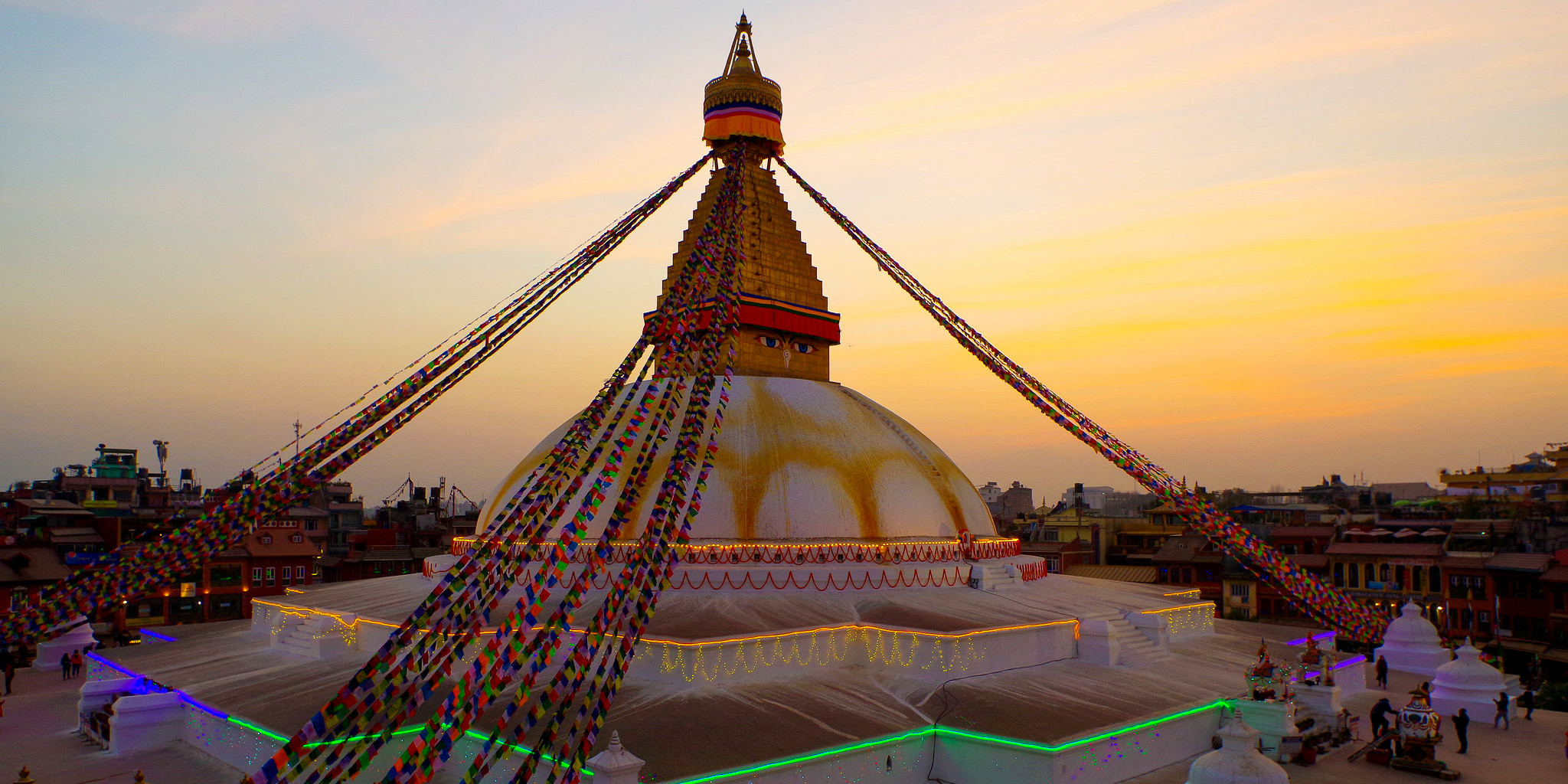

 1.jpg)






